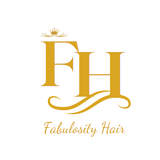What is the purpose of braiding hair?
Braids have been utilized for various purposes throughout history, from designating tribes, social standing, and other societal classifications to tracing slave escape routes. This technique of meticulously braiding tresses has been passed down through generations and has become ingrained in Black and African cultures. Knotless braided wigs are now worn to commemorate and honor one's ancestors and display one's personality and flair. While the look of the knotless braids has altered little over the last 5,000 years, the procedures described in ancient artwork and artifacts have remained consistent.

Advantages of Braiding Hair
There is No Hair Breakage.
When your hair is correctly braided, there is less hair breakage than when it is left loose. The strands adhere to one another in a more organized form. Braid your hair before bedtime, as nighttime tossing and turning can result in significant breakage. This can also have an effect on the condition of your hair over time.
Moisture Retention
Believe it or not, your hair also requires some moisture. With time, dryness can cause the strands to become brittle. Women with curly or wavy hair are said to have more hair dryness, as the strands cannot retain moisture. By braiding them, you can retain some of the natural moisture.
No Knots
Minutes wasted untangling your hair can be eliminated if you braid them regularly. Apart from saving time, braiding ensures that less hair is lost when a comb is run through the strands. Braided wigs have never been out of style. If anything, more fashionable hairstyles have risen to prominence lately.
Excellent for Frizz
When frizzy hair is untangled, it loses a lot of volume. This is because frizzy hair is more prone to becoming knotted and unruly. While anti-frizz serums are frequently helpful, braiding your hair after using them is also a good idea.
Braids are Fashionable.
Braided wigs have never been out of style. Additionally, rather than using heat to style your hair, use braids to naturally curl it and give it a fresh shape and texture. Heat degrades the quality of hair, and its repeated usage is particularly damaging.
What you Should Know
Bear in mind that braiding your hair requires time and work. If you are not an early riser, make braids before bed. Additionally, if you have washed your hair, ensure that it is completely dry before beginning to braid. Avoid making the braids overly tight since this may result in breakage.
Braid Types
Cornrows
Cornrows date back to Africa in 3000 B.C. Typically, the patterns denoted the tribe a person was a member of and their status within that tribe. Warriors and rulers also wore cornrows to denote their social position. Today, the style is prevalent around the world and is particularly significant in West Africa, Sudan, and the Horn of Africa. Braided wigs can denote a person's age, marital status, money, kinship, religion, or personality in these areas. The close, neat style is worn alone or with shells, glass, coral, flowers, and twigs entwined throughout.
Ghana Braids
Ghana braids originated in Africa and were first depicted in 500 B.C. hieroglyphics and sculptures. Since then, the style has significantly influenced Ghana's cultural, social, and religious traditions. Ghana braids are similar to cornrows in that they are kept near the scalp, but the Ghanaian design begins small and gradually expands to a larger pattern before tapering off at the ends. While this style is often unadorned, there are other ways to wear these braids—high ponytails or wrapped buns, for example.
Fulani Braids
Fulani braids or feed-in braids are indigenous to West Africa and the Sahel region. Through generations of women, the huge nomadic population carried on the traditional hairdo. This style, which is known for its length and distinctive patterns, contains braids that hang or loop on the sides of the head. Additionally, there will be a coiffure in the center of the head. The hair is then adorned with beads, shells, wooden or metal ornaments, or even a family's silver coins and amber.
Goddess Braids
Goddess braids date back to Ancient Africa and are similar in appearance and history to cornrows. Among tribes, the hairstyle was regarded as art, ingenuity, and perfection and was frequently embellished with metal embellishments. Goddess braids are thick, often elevated, and exceedingly defined and were made by braiding closely to the scalp.
Box Braids
Box braids date back to 3500 B.C. in South Africa. This style, which was popular in the past and continues to be popular today, takes up to eight hours to make. Many believed that if a lady could afford the time and expense of these braids, she was a wealthy woman. Women also communicated their preparation for marriage, economic standing, and other social classifications by using vibrant beads, cowrie shells, gems, and other embellishments in their box braids.
Faux Locs & Dreadlocks
Contrary to popular opinion, dreadlocks originated in Africa, not Jamaica. The style initially appeared in The Vedas in 2500 B.C., when the Hindu God Shiva was reported to wear "jaTaa" (dreadlocks in Sanskrit). Locs were also shown in ancient Egyptian carvings, engravings, and artifacts. Throughout the centuries, mummified pharaohs have been discovered with their dreadlocks intact. Later on, the Himba Tribe of Namibia adopted the style. There, hair was used to denote a person's age or marital status—for instance, a young woman may braid back her dreadlocks to uncover her face and demonstrate her readiness for marriage. Today, this haircut is prevalent throughout the world and has a variety of cultural connotations.


Leave a comment